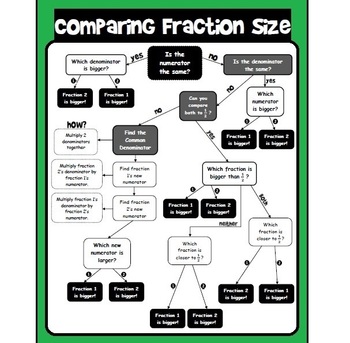Comparing Fraction Size flowchart
Scaffolded Math and Science
30.4k Followers
Resource Type
Standards
CCSS3.NF.A.3
CCSS3.NF.A.3d
CCSS4.NF.A.1
CCSS4.NF.A.2
Formats Included
- PDF
Pages
1 page
Scaffolded Math and Science
30.4k Followers
Description
This flowchart walks students through a series of questions to determine which of 2 fractions is larger. Do they have the same numerator? Denominator? Is one bigger than 1/2? Should we find a common denominator? Especially for kids who need concrete steps and scaffolding.
You may also like:
Total Pages
1 page
Answer Key
N/A
Teaching Duration
N/A
Report this resource to TPT
Reported resources will be reviewed by our team. Report this resource to let us know if this resource violates TPT’s content guidelines.
Standards
to see state-specific standards (only available in the US).
CCSS3.NF.A.3
Explain equivalence of fractions in special cases, and compare fractions by reasoning about their size.
CCSS3.NF.A.3d
Compare two fractions with the same numerator or the same denominator by reasoning about their size. Recognize that comparisons are valid only when the two fractions refer to the same whole. Record the results of comparisons with the symbols >, =, or <, and justify the conclusions, e.g., by using a visual fraction model.
CCSS4.NF.A.1
Explain why a fraction 𝘢/𝘣 is equivalent to a fraction (𝘯 × 𝘢)/(𝘯 × 𝘣) by using visual fraction models, with attention to how the number and size of the parts differ even though the two fractions themselves are the same size. Use this principle to recognize and generate equivalent fractions.
CCSS4.NF.A.2
Compare two fractions with different numerators and different denominators, e.g., by creating common denominators or numerators, or by comparing to a benchmark fraction such as 1/2. Recognize that comparisons are valid only when the two fractions refer to the same whole. Record the results of comparisons with symbols >, =, or <, and justify the conclusions, e.g., by using a visual fraction model.


